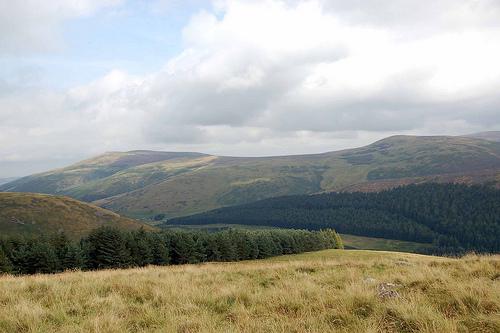The Cheviot Hills are on the northern English border with Scotland.
The majority of the hills are in England, and the highest hill is the Cheviot at 815 metres. The hills host the final, northern, leg of the Pennine Way. Geologically they are Devonian granite outcrops with andesite lava outflows around the edges. The surrounding countryside is carboniferous limestone. On the English side of the border the hills fall within the Northumberland National Park.

The Northern Cheviots have five main valleys:
- College
- Harthope
- Breamish
- Bowmont
- Heatherhope
The Southern Cheviots run down to the River Coquet and its valley.
The Cheviot hills became part of the Northumberland National Park when it was created in 1956. Prior to this the hills had seen many battles and skirmishes between the English and the Scots right up to the Middle Ages. They also represented the eastern part of the Border Reiver lands.
The Cheviot hills are more gently rounded then steep and precipitous. Heather and moorland is common and are receives a high level of rain fall.
None
The College Valley with its varied bird life, ancient stone circle and hill forts.
The valley has restricted car access - 12 permits issued each day, but it makes great cycling.
Kirk Yetholm and the end of the Pennine Way
Gefrin an ancient capital of the then British Isles. .
Wooler a pleasant market town with pleanty of history and advice about getting round the Cheviots.
Rothbury another market town but next to Cragside, a national trust estate and building of much beauty.
There are very few opportunities to buy within the Cheviot Hills. However there are shops in Wooler and Rothbury, and a little further away Otterburn has a mill shop .
There are plenty of local public houses around the Cheviot hills.
Advice on exploring the Cheviot hills should be sought from the National Park advisors .
